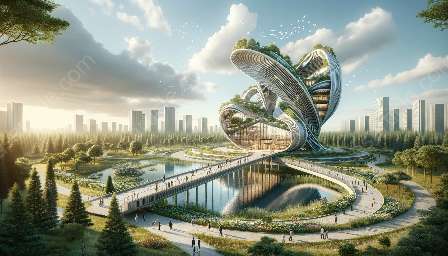Reservoirs are vital components of water resources engineering, serving multiple purposes such as water supply, flood control, and hydropower generation. This topic cluster will delve into the principles, techniques, and challenges of reservoir design and management, emphasizing their significance in engineering and environmental preservation.
The Significance of Reservoir Design
Reservoir design plays a crucial role in addressing water scarcity and ensuring sustainable water supply for various purposes. By carefully planning and constructing reservoirs, engineers can effectively manage water resources, mitigate flooding, and provide a reliable source of water for irrigation, industrial, and domestic use.
Reservoir Design Principles
Designing a reservoir involves considering a range of factors, including topography, geology, hydrology, and environmental impact. Engineers must assess the site's suitability for reservoir construction, analyze water availability, and evaluate the potential impacts on ecosystems and communities.
The design process includes determining the reservoir's capacity, water levels, and spillway capacity to handle flood events. Efficient design also involves optimizing the storage volume while minimizing environmental disruption and maximizing the benefits to stakeholders.
Key Elements of Reservoir Design
The key elements of reservoir design include dam construction, spillway design, outlet works, and environmental mitigation measures. Dam construction involves choosing suitable materials, such as concrete, earth, or rockfill, and designing the structure to withstand various hydraulic and seismic forces.
Spillway design is critical for managing excess water and preventing dam failure during extreme events. Engineers employ various spillway types, such as gated, ungated, or auxiliary spillways, while considering factors like flow capacity, erosion control, and energy dissipation.
Outlet works, including valves, gates, and conduits, are designed to regulate water release and ensure controlled discharge for supply, irrigation, or environmental flow requirements.
Furthermore, reservoir design incorporates environmental mitigation measures to minimize ecological disturbances, protect wildlife habitats, and enhance the resilience of surrounding ecosystems.
Challenges in Reservoir Design and Management
Reservoir design and management present numerous challenges, ranging from technical complexities to environmental and social considerations. Engineering professionals must address issues such as sedimentation, water quality, and the effects of climate change on reservoir systems.
Sedimentation Management
Sedimentation is a common challenge in reservoirs, as it reduces storage capacity and affects water quality and ecosystem health. Engineers employ sediment management techniques, such as sediment bypass tunnels, reservoir dredging, and watershed management, to mitigate the impacts of sediment accumulation.
Water Quality Preservation
Maintaining water quality is essential for sustaining ecosystem health and meeting the diverse needs of stakeholders. Effective reservoir management involves monitoring and controlling factors such as nutrient levels, turbidity, and contaminants to ensure the provision of safe and clean water resources.
Climate Resilience and Adaptation
As global climate patterns change, reservoir systems face increasing variability in precipitation, runoff, and evaporation rates. Engineers need to incorporate climate adaptation strategies into reservoir design and management, including flexible operational plans, robust infrastructure, and integrated water resource management approaches.
Role of Reservoirs in Environmental Preservation and Hydropower Generation
Reservoirs play a significant role in environmental preservation and clean energy generation through hydropower. When designed and managed responsibly, reservoirs can contribute to habitat conservation, groundwater recharge, and the reduction of greenhouse gas emissions through renewable energy production.
Environmental Conservation and Restoration
Reservoirs can serve as valuable tools for environmental conservation by supporting wildlife habitats, enabling ecosystem restoration activities, and facilitating sustainable water use practices that benefit surrounding ecosystems.
Hydropower Generation
Hydropower derived from reservoir systems provides a renewable and clean energy source. Reservoir design and management are optimized to maximize hydropower production while minimizing environmental impacts, showcasing the potential for sustainable energy solutions.
Advancements in Reservoir Engineering and Management
Technological innovations and research advancements continue to enhance the field of reservoir engineering, offering novel solutions for sustainable water resources management and infrastructure development. Researchers and practitioners are exploring areas such as remote sensing, data analytics, and adaptive management techniques to improve reservoir design, operations, and environmental performance.
Remote Sensing and Geospatial Analysis
Remote sensing technologies, including satellite imagery and aerial surveys, enable engineers to assess watershed characteristics, monitor land use changes, and evaluate environmental impacts, contributing to more informed reservoir design and management decisions.
Data Analytics and Modeling
Data analytics and modeling tools support the predictive analysis of hydrological trends, water quality dynamics, and reservoir behavior, empowering engineers to optimize operations and address challenges effectively.
Adaptive Management Strategies
Adaptive management principles advocate for flexible and responsive approaches to reservoir operations, integrating stakeholder input, scientific data, and real-time monitoring to adapt management strategies and enhance environmental and social outcomes.
Conclusion
Reservoir design and management are integral to water resources engineering, environmental preservation, and sustainable development. By understanding the principles, techniques, and challenges associated with reservoir engineering, professionals and stakeholders can work together to create resilient and multifunctional reservoir systems that benefit society and the environment.

